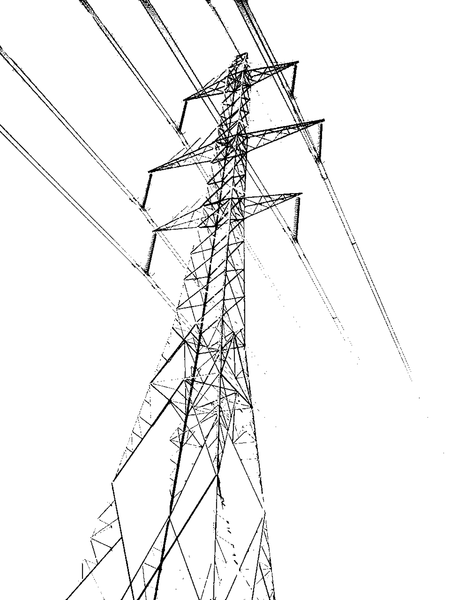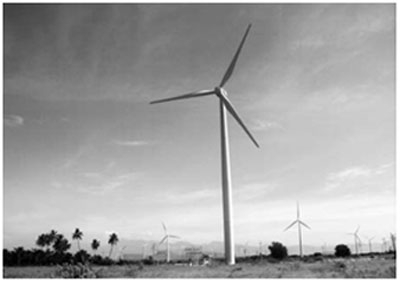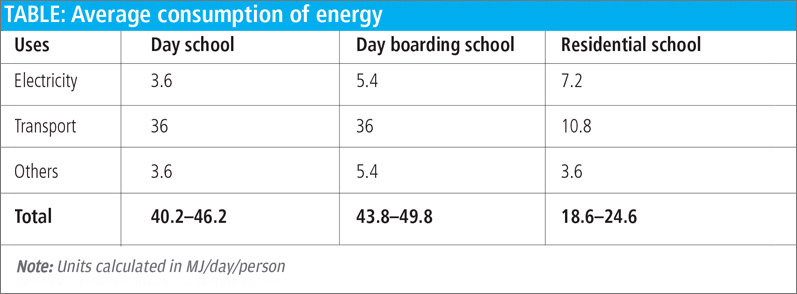Energy
 Becoming Energy Efficient
Becoming Energy Efficient
Energy has transformed our material life and brought magic to our lives through its different forms—light, sound, heat and electricity. But we consume it in large amounts and often waste it.

Electric bulbs, cars, fans, air conditioners, televisions, cooking ovens, chullahs, machines—the word ‘energy’ conjures up images of almost everything that makes up our everyday lives. Some forms of energy are renewable, including energy harnessed from the sun, wind and water. Energy produced from stuff we usually discard as garbage, such as dead trees, branches, leftover crops and gobar or dung, along with other forms of livestock manure—resources collectively called ‘biomass’—can also be used and then replenished.
There is also a second category—non-renewables. All forms of fossil fuels—oil, coal and natural gas—are examples. We are using fuels that were made more than 300 million years ago, before the time of dinosaurs. These fuels are being depleted slowly but steadily due to constant use. India, for instance, has oil reserves at present production levels only for 19 years, gas for 28 years, and coal for about 230 years. Then once they are gone, they are gone.Scorching Point
Scorching Point
The impact of ‘global warming’ has already reached scorching levels, and is rising rapidly. Here is a sample of what the future holds:
- There will be dramatic changes in weather patterns. Rainfall will increase sharply in higher altitudes and decrease in lower ones. Storms and hurricanes will become more frequent. So will heat-waves and droughts. The threat of natural hazards, ranging from cloudbursts, avalanches and landslides to glacial lake outburst floods (GLOFs), mudflows and earthquakes will intensify.
- The most critical link between glaciers and climate is maintaining the earth’s water balance. In fact, glacier melt has contributed as much as 30 per cent of the change in sea level in the 20th century.

Dangerous Addiction
There are two key issues that loom when we explore this wonder resource called energy. First, there are finite or limited amounts of non-renewable energy sources. Unfortunately, the human race has become addicted to these and has already used up far more than it can afford. So Planet Earth is heading for a major energy crisis.
Second, overuse of these forms of energy has completely tilted the atmospheric balance that nature had created to make this a habitable planet. Emissions from vehicles fuelled by gasoline and factories that burn oil are now turning it into a boiling pot.
So What Do We Do?
We consume less and conserve: Saving energy is the first step to energy conservation. Switching off electrical gadgets when they are not in use and turning off the car engine while waiting at a traffic signal point are great ways to start. This, however, is not enough. Investing in products, appliances and services that use energy more efficiently is a second step, e.g. using compact fluorescent lamps that consume 40 per cent less electricity than ordinary bulbs and driving fuel-efficient vehicles. New and innovative technology is the buzz word here. But again, this is not enough!
We find alternatives: Technology has to be used to find more long-term and sustainable solutions, such as ways to harness energy from renewable sources more efficiently, cost effectively and on a larger scale. The sun, wind, and biomass can be used to produce energy that can be spent and then created again—without threatening the precarious climatic balance—as these sources are far less polluting than fossil fuels. Interestingly, in India, this switchover will mainly affect those who live in cities and towns because they are the prime consumers of fossil fuels or commercial energy.
India is energy-scarce and has a price-sensitive market. But it is also blessed with abundant solar irradiation that can be harnessed effectively to mitigate energy scarcity to a large extent. Wind power in India has grown at a cumulative annual growth rate of 26 per cent from 2002–03 to 2012–13. The Ministry of New and Renewable Energy has proposed a Wind Mission to achieve an ambitious target of 1,00,000 MW installation by 2022.
 India is the main story. It continues to be the second largest wind market in Asia, and in 2015 surpassed Spain to attain the fourth place in terms of cumulative installations. The Indian wind sector has struggled over the years to repeat the strong market performance of 2011 when over 3 GW was installed. 2015 seems to signal the onset of a recovery phase given the government’s desire to address some of the structural bottlenecks in the market.
India is the main story. It continues to be the second largest wind market in Asia, and in 2015 surpassed Spain to attain the fourth place in terms of cumulative installations. The Indian wind sector has struggled over the years to repeat the strong market performance of 2011 when over 3 GW was installed. 2015 seems to signal the onset of a recovery phase given the government’s desire to address some of the structural bottlenecks in the market.
—Global Wind 2015 Report
In the Global Wind Energy Council (GWEC) annual Market Statistics 2016 report, Steve Sawyer, GWEC Secretary general, said, ‘India set a new national record with 3,612 MW of new installations, 2016’s fourth largest market; this brings the country’s total to 28,700 MW, consolidating its fourth position in total cumulative installations as well. We have great expectations for the Indian market and we look forward to seeing offshore making a contribution in India in the next few years.’

DID YOU KNOW?
- Burning fossil fuels releases a complex mixture of pollutants. Exposure to these pollutants causes acute short-term effects, such as irritation of the eyes and headaches, as well as chronic long-term diseases, like lung cancer.
- WHO estimates that 10-15 per cent of Indian children in the 5-11 age group suffer from asthma. It costs an average of Rs 300 per month to buy a child’s asthma medicines.
- The first step towards saving energy is to meter all sources of energy used.
- Ninety per cent of the total electricity used by a standard incandescent light bulb is wasted as heat.
- Over 1.6 billion people in the world do not have access to electricity of which roughly 25 per cent are in India.
- One busload of people takes 40 vehicles off the road during rush hour, saves 70,000 litres of petrol, and avoids over 175 tonnes of emission every year.
- The thickness of the tube light is directly proportional to its power consumption. The thicker the tube light the more electricity it consumes. The ultra slim tube light are not only stylish, they consume the least amount of electricity.
- Ceiling fans consume more electricity compared to light, but still are not paid enough attention when we think of electricity savings. A regular unrated ceiling fan can consume 75 watts of power whereas the thickest tube light consumes 40 watts. Bureau of Energy Efficiency (BEE) has rated the ceiling fans and a super efficient fan with the best air delivery system can use as less as 35 watts of power.
- Bureau of Energy Efficiency was set up in 2002 under the Energy Conservation Act, 2001 to create policies and develop strategies with a thrust on self-regulation and market principles to achieve energy efficiency. BEE sets the standards and label for marking star-rating of various appliances. They have been rating refrigerators and air-conditioners based on energy efficiency since 2006.
- We waste about 7-10% of units of electricity because of appliances in the standby mode. We can save this amount of power simply by turning off the switch once the devise is no longer being used.
- If the flame of the cookstove in your house burns blue, it means that there is efficient use of gas and if it burns yellow, it means that there is impartial combustion and it produces gases that are harmful for your health. Make sure that the stove is clean and always use the flame so that it burns blue.







